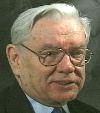Are We Alone?The longest sustained Denkexperiment
devoted to trying to answer this third Cosmic Question - how to conceive of
other creatures in the universe who are not descended from our ancestors and
therefore do not belong to genus homo,
but who are rational and capable of movement, thought, and perhaps of free will
- was the thousand-year Medieval and Byzantine (as well as Jewish and Muslim)
investigation of angels. The accepted “philosophical,” as distinct from the dogmatic, argument
for the existence of angels rested upon these assumptions of the necessary
plenitude and continuity of the chain of beings; there are manifestly
possibilities of finite existence above the grade represented by man, and there
would consequently be links wanting in the chain if such beings did not
actually exist. The reality of the
heavenly hosts could thus be known a priori
by the natural reason, even if a supernatural revelation did not assure us of
it. That assurance on the basis of what Lovejoy calls “supernatural
revelation” came not from Athens but from Jerusalem. To fill the categories provided by Athens, it was possible to
provide from Jerusalem a vast body of specific data: from the Cherubim who had been “placed at the east of the garden
of Eden, and a flaming sword which turned every way, to keep the way of the
tree of life” after the fall of Adam and Eve, Perhaps nowhere does the joint contribution of Athens and Jerusalem to
this experiment in answering the third Cosmic Question “Are we alone?” become
more strikingly visible than in a pseudonymous sixth-century work carrying the
name of Dionysius the Areopagite, the shadowy figure mentioned in the Acts of
the Apostles as part of its account of Paul’s visit to Athens: On that basis, Thomas Aquinas, who, it has been estimated, quoted the Corpus Areopagiticum nearly a thousand
times in his writings,
Thus he drew upon Athens, the words of the Demiurge in Plato’s Timaeus, to explicate Jerusalem, biblical teaching, but no less upon biblical teaching to explicate Greek philosophy. And when Aquinas subsequently took up “the local movement of angels,” the quotations were almost all from Aristotle’s Physics; but that should not be permitted to obscure the real source, in the usage of Jerusalem, of such terms and concepts in this question as “a beatified angel” or “the holy angels.” The clinching argument of the first article on “the local movement of angels,” moreover, did not come from Aristotle, nor from any other citizen of Athens, but from Jerusalem. First he invoked the fundamental distinction of Aristotle’s Physics between potentiality and actuality, in order to set the stage for a biblical proof text. In an argument that fittingly illustrates the complex relationships in this “tale of two cities” that I have been trying to tell, he linked these two sentences:
Therefore it followed from this combination of authorities that in
order to carry out this ministry and mission to those “who receive the inheritance
of salvation,” as this had been documented throughout the Old and the New
Testament, it was necessary that the angels be capable of local movement. It had, after all, been by means of a
considerable amount of such “local movement” that “the angel of the Lord went
out, and smote in the camp of the Assyrians [commanded by Sennacherib] an
hundred fourscore and five thousand:
and when they arose in the morning, behold, they were all dead corpses.” The effort of Thomas Aquinas, but also of Moses Maimonides, to conceptualize the nature, the movement, and the knowledge of the angels was an ambitious consideration of our third Cosmic Question, “Are we alone?” In this, as in the first two Cosmic Questions, “Did the universe have a beginning?” and “Is the universe designed?” it was the conjunction as well as the divergence between Athens and Jerusalem that illumined the questions, provided material for the answers, and set the terms for subsequent discussions of all three Cosmic Questions - including (Who knows?) perhaps even the discussions that will follow later in this volume.
Contributed by: Dr. Jaroslav Pelikan |
|
Source: Jaroslav Pelikan Related Media:
Other Resources:
|




